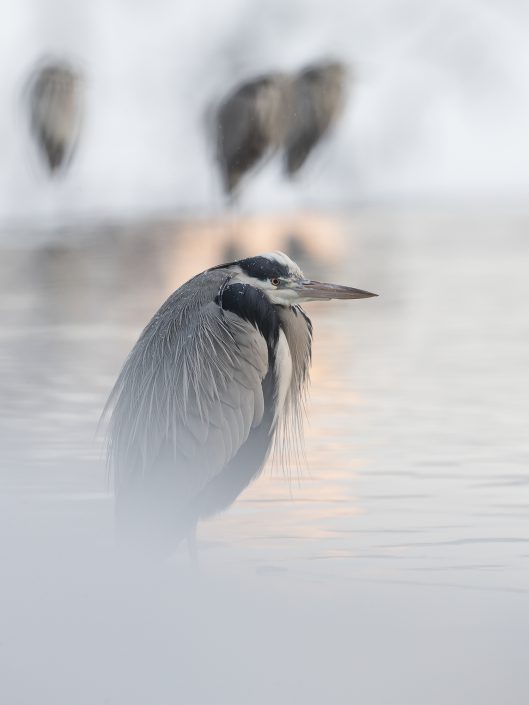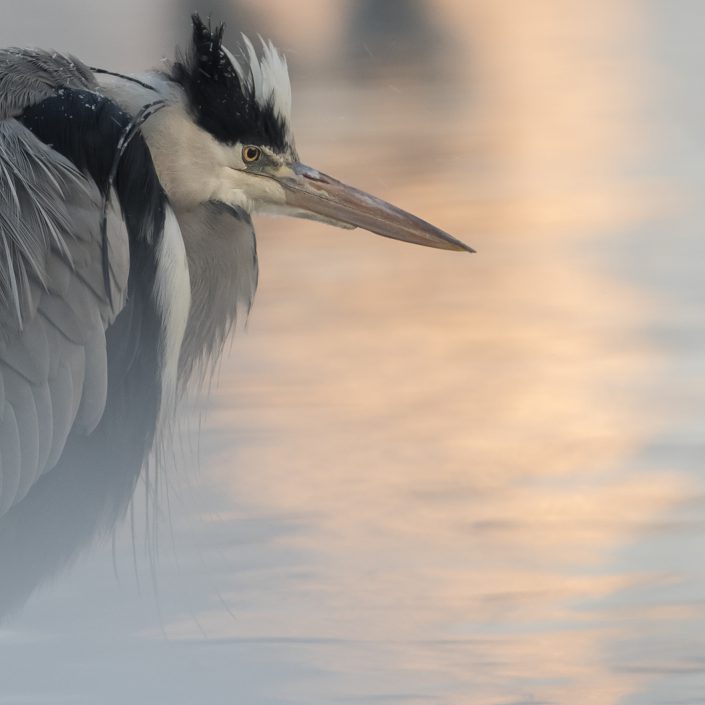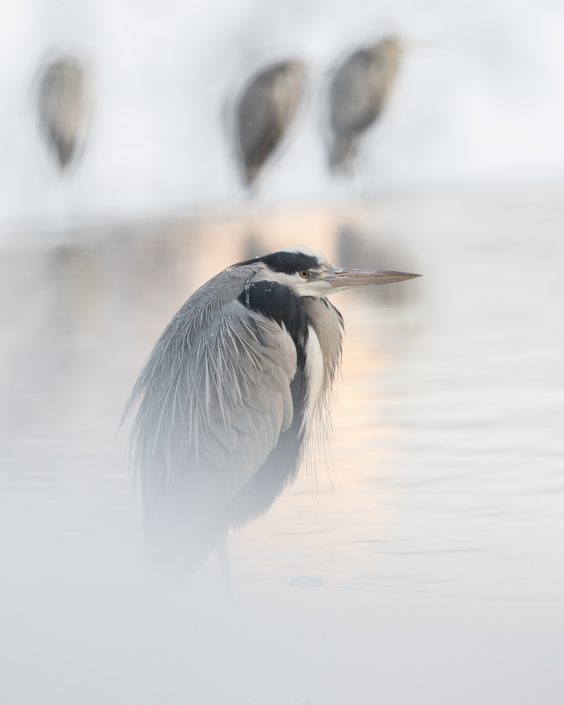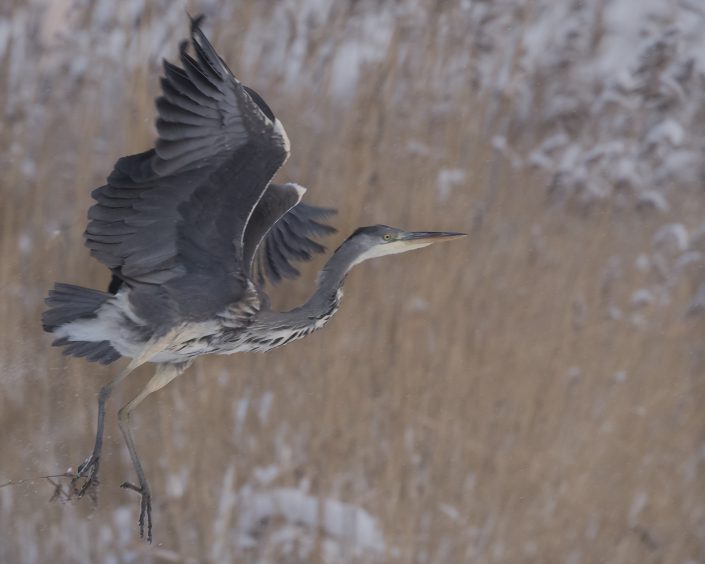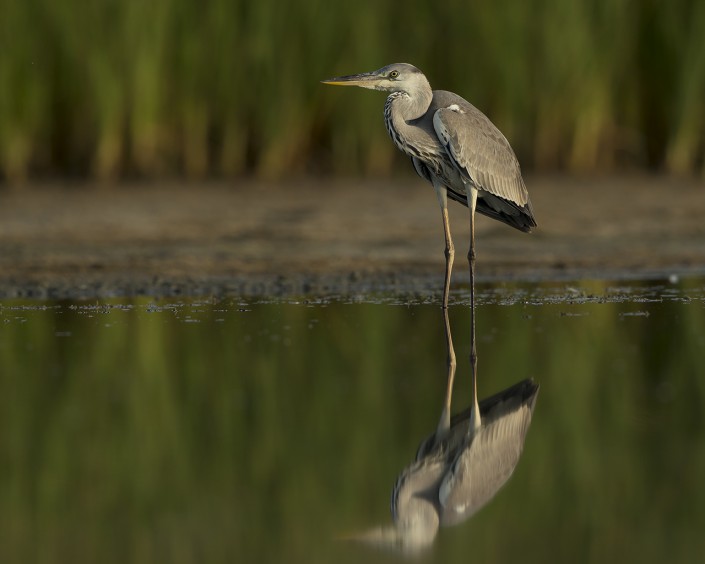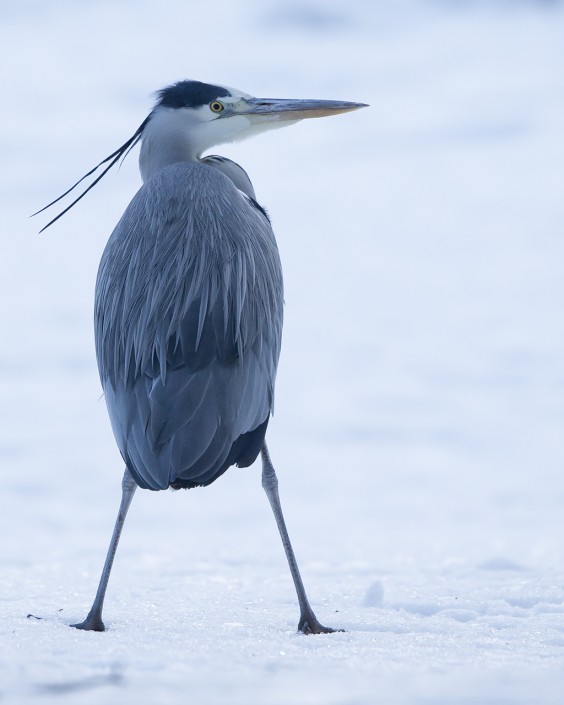This post is also available in: Swedish
Grey heron – Ardea cinerea
Grey heron – Ardea cinerea
is a wading bird of the heron family Ardeidae, native throughout temperate Europe and Asia and also parts of Africa. It is resident in the milder south and west, but many birds retreat in winter from the ice in colder regions. It has become common in summer even inside the Arctic Circle along the coast of the nordic countries. It is a large bird, standing up to 100 cm (39 in) tall and measuring 84–102 cm (33–40 in) long with a 155–195 cm (61–77 in) wingspan. The body weight can range from 1.02–2.08 kg (2.2–4.6 lb). Its plumage is largely grey above, and off-white below.
The birds breed colonially in spring in “heronries”, usually building their nests high in trees. A clutch of usually three to five bluish-green eggs is laid. Both birds incubate the eggs for a period of about 25 days, and then both feed the chicks, which fledge when seven or eight weeks old. Many juveniles do not survive their first winter, but if they do, they can expect to live for about five years.
The grey heron has a slow flight, with its long neck retracted (S-shaped). This is characteristic of herons and bitterns, and distinguishes them from storks, cranes, and spoonbills, which extend their necks. It flies with slow wing-beats and sometimes glides for short distances. It sometimes soars, circling to considerable heights, but not as often as the stork. In spring, and occasionally in autumn, birds may soar high above the heronry and chase each other, undertake aerial manoeuvres or swoop down towards the ground. The birds often perch in trees, but spend much time on the ground, striding about or standing still for long periods with an upright stance, often on a single leg.
It sounds like this
Recording by Timo S. from Xeno canto






















































































































































